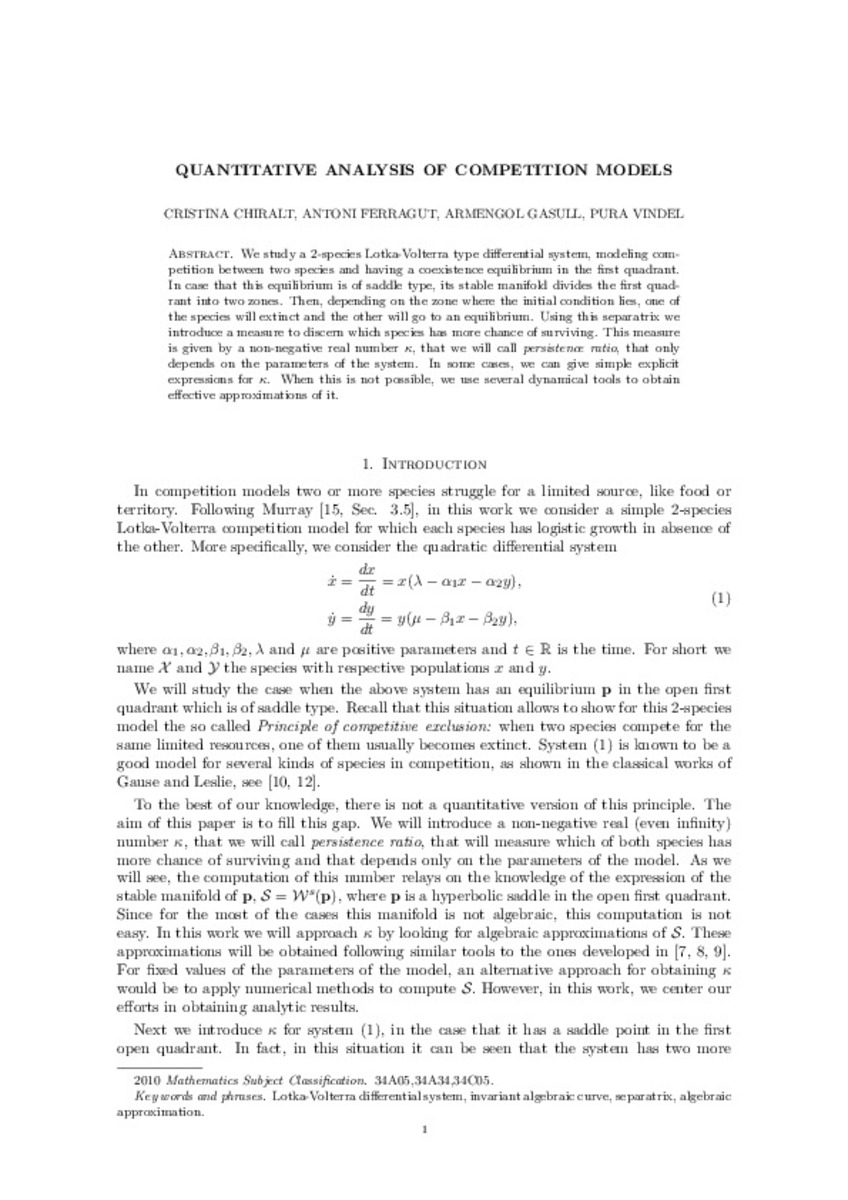Mostrar el registro sencillo del ítem
Quantitative analysis of competition models
| dc.contributor.author | Chiralt, Cristina | |
| dc.contributor.author | Ferragut, Antoni | |
| dc.contributor.author | Gasull, Armengol | |
| dc.contributor.author | Vindel, Pura | |
| dc.date.accessioned | 2017-08-31T11:39:20Z | |
| dc.date.available | 2017-08-31T11:39:20Z | |
| dc.date.issued | 2017 | |
| dc.identifier.issn | 1468-1218 | |
| dc.identifier.uri | http://hdl.handle.net/10234/168536 | |
| dc.description.abstract | We study a 2-species Lotka–Volterra type differential system, modeling competition between two species and having a coexistence equilibrium in the first quadrant. In case that this equilibrium is of saddle type, its stable manifold divides the first quadrant into two zones. Then, depending on the zone where the initial condition lies, one of the species will extinct and the other will go to an equilibrium. Using this separatrix we introduce a measure to discern which species has more chance of surviving. This measure is given by a non-negative real number κ, that we will call persistence ratio, that only depends on the parameters of the system. In some cases, we can give simple explicit expressions for κ. When this is not possible, we use several dynamical tools to obtain effective approximations of it. | ca_CA |
| dc.format.extent | 21 p. | ca_CA |
| dc.format.mimetype | application/pdf | ca_CA |
| dc.language.iso | eng | ca_CA |
| dc.publisher | Elsevier | ca_CA |
| dc.rights.uri | http://rightsstatements.org/vocab/CNE/1.0/ | * |
| dc.subject | Lotka–Volterra differential system | ca_CA |
| dc.subject | Invariant algebraic curve | ca_CA |
| dc.subject | Separatrix | ca_CA |
| dc.subject | Algebraic approximation | ca_CA |
| dc.title | Quantitative analysis of competition models | ca_CA |
| dc.type | info:eu-repo/semantics/article | ca_CA |
| dc.identifier.doi | https://doi.org/10.1016/j.nonrwa.2017.06.001 | |
| dc.relation.projectID | P1-1B2015-16 ; MTM2013-40998-P ; 2014SGR-568 ; MTM2014-52016-C02-2-P. | |
| dc.rights.accessRights | info:eu-repo/semantics/openAccess | ca_CA |
| dc.relation.publisherVersion | http://www.sciencedirect.com/science/article/pii/S1468121817300810 | ca_CA |
| dc.type.version | info:eu-repo/semantics/publishedVersion | ca_CA |
Ficheros en el ítem
Este ítem aparece en la(s) siguiente(s) colección(ones)
-
MAT_Articles [750]
Articles de publicacions periòdiques







